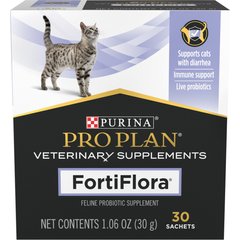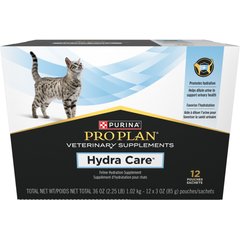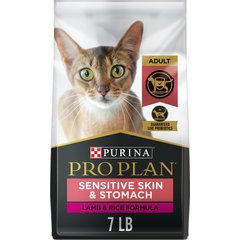6 Things You Must Know About Cat Urinary Tract Infections
Why is My Cat Not Using the Litter Box?
By Lorie Huston, DVM
A cat that refuses to use the litter box or who repeatedly urinates outside of the litter box can be difficult to live with. Unfortunately, many cat owners become frustrated and end up relinquishing the cat to a local shelter or turning the cat outdoors when faced with this situation. However, if your cat suddenly and inexplicably stops using the litter box, there is generally a reason why the behavior has occurred. Feline lower urinary tract disease (FLUTD) is one of the more frequent medical causes.
1. What is FLUTD?
Feline lower urinary tract disease, or FLUTD, is a complex of diseases that cause similar symptoms. Causes of urinary tract disease include crystals or stones in the urinary bladder, bladder infections, inflammation in the urinary bladder (sometimes referred to as idiopathic cystitis), and other abnormalities within the urinary tract. FLUTD is one of the most common reasons cats are brought to the veterinarian.
6 Things You Must Know About Cat Urinary Tract Infections
 Feliway Optimum Enhanced Calming 30 Day Diffuser for CatsRated 3.9 out of 5 stars1591Reviews$29.99Chewy Price
Feliway Optimum Enhanced Calming 30 Day Diffuser for CatsRated 3.9 out of 5 stars1591Reviews$29.99Chewy Price Purina Pro Plan Veterinary Diets FortiFlora Powder Probiotic Digestive Supplement for Cats, 30 countRated 4.7 out of 5 stars5631Reviews$30.99Chewy Price
Purina Pro Plan Veterinary Diets FortiFlora Powder Probiotic Digestive Supplement for Cats, 30 countRated 4.7 out of 5 stars5631Reviews$30.99Chewy Price Purina Pro Plan Veterinary Diets Hydra Care Liver Flavored Liquid Supplement for Cats, 3-oz pouch, case of 12Rated 4.4 out of 5 stars2629Reviews$14.99Chewy Price
Purina Pro Plan Veterinary Diets Hydra Care Liver Flavored Liquid Supplement for Cats, 3-oz pouch, case of 12Rated 4.4 out of 5 stars2629Reviews$14.99Chewy Price Purina Pro Plan Adult Sensitive Skin & Stomach Lamb & Rice Formula Dry Cat Food, 7-lb bagRated 4.6 out of 5 stars2245Reviews$28.08Chewy Price
Purina Pro Plan Adult Sensitive Skin & Stomach Lamb & Rice Formula Dry Cat Food, 7-lb bagRated 4.6 out of 5 stars2245Reviews$28.08Chewy Price
3. Cat Displaying FLUTD Signs, Now What?
If your cat is displaying signs of FLUTD, such as straining repeatedly to urinate and inability to produce urine, seek veterinary care immediately. This condition can rapidly become fatal, especially in male cats.
Your veterinarian will examine the cat and collect urine samples for testing. In some cases, blood testing may be required. Radiographs (X-rays) are also often necessary, as well as an abdominal ultrasound, in order to diagnose the cause of FLUTD.
4. What are some FLUTD Risk Factors?
A number of risk factors are associated with FLUTD. Stress can play a big part in the development of cystitis (inflammation of the urinary bladder), leading to signs of FLUTD. Causes of stress can include changes such as a new pet in the household, a new person in the household, a change in the daily routine (change in work schedule, etc.), or a change in the environment (moving to a new home, new furniture, moving furniture to new location within the home, renovations, etc.). Interactions between cats in a multi-cat household can also lead to stress, as can feeling threatened by animals seen outdoors near the home.
Other risk factors include low activity level, excess weight and diet. Cats fed a dry food diet may not consume enough moisture to adequately flush out the bladder, predisposing them to FLUTD. Encouraging increased water consumption and/or adding more canned food to the diet to increase moisture intake can have a protective effect.
5. How is FLUTD treated in the Short-term?
In the short-term, the immediate concern is locating the cause of FLUTD, if possible. Treatment of the underlying cause, if identified, is indicated. Antibiotics may be necessary if infection is identified. If bladder stones are identified, a specialized diet may be required or, in some cases, surgery may be recommended.
6. How is FLUTD treated in the Long-term?
Your veterinarian may recommend long-term usage of a specialized diet. Discuss with your veterinarian which diet is best suited to your cat’s condition and whether it should be dry, canned, or a mix of both. Relieving stress through the use of environmental enrichment and pheromones such as Feliway are also helpful.
A Few More Tips
In both the short- and long-term, encouraging increased water consumption is indicated through the use of fountains or dripping faucets. Make sure your cat has clean fresh water available at all times.
Additionally, recurrence of FLUTD is possible. Try to prevent this be minimizing your cat's stress and increasing his or her water consumption can be helpful in preventing the disease. Working with your veterinarian to determine a suitable diet for your cat is recommended as well.